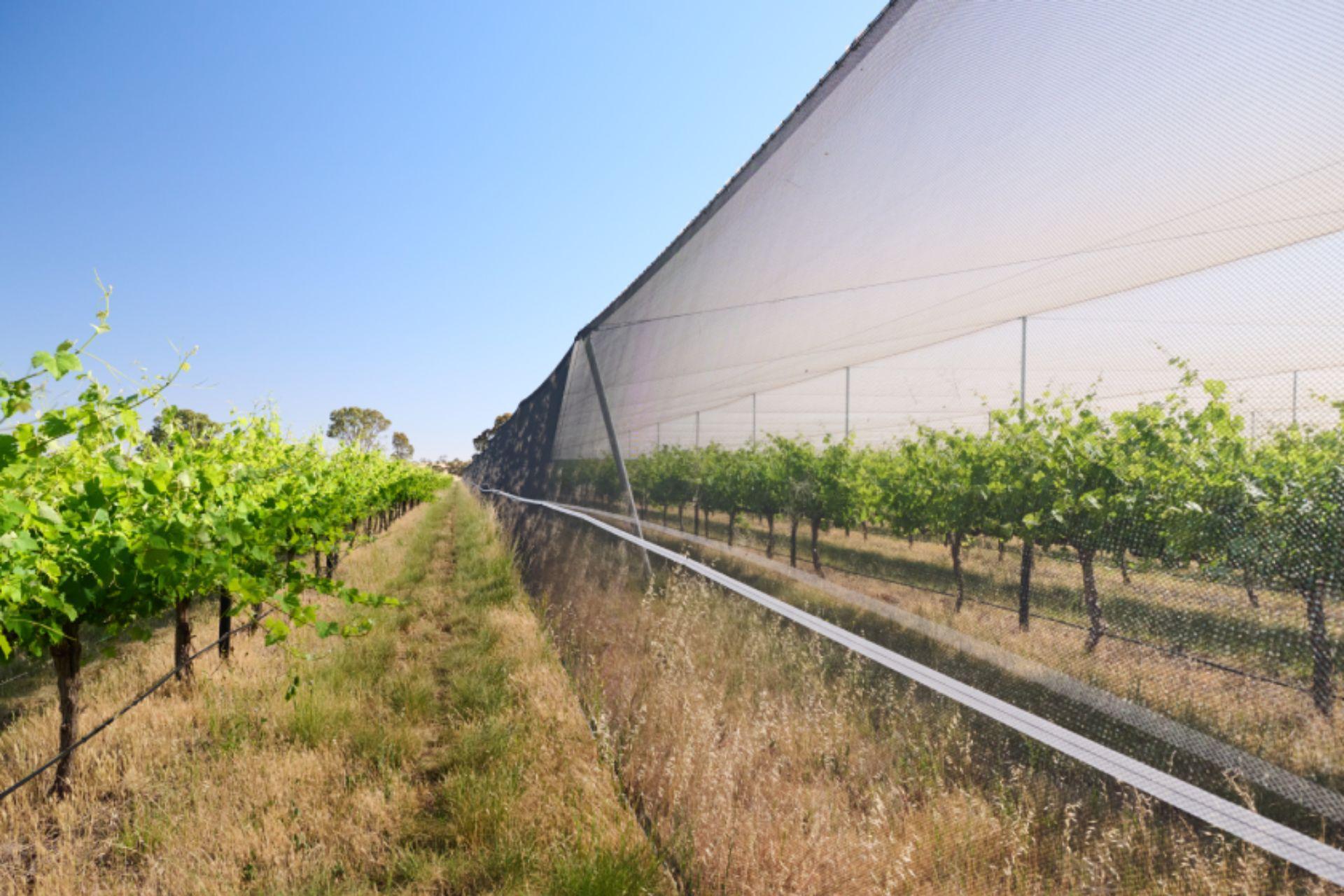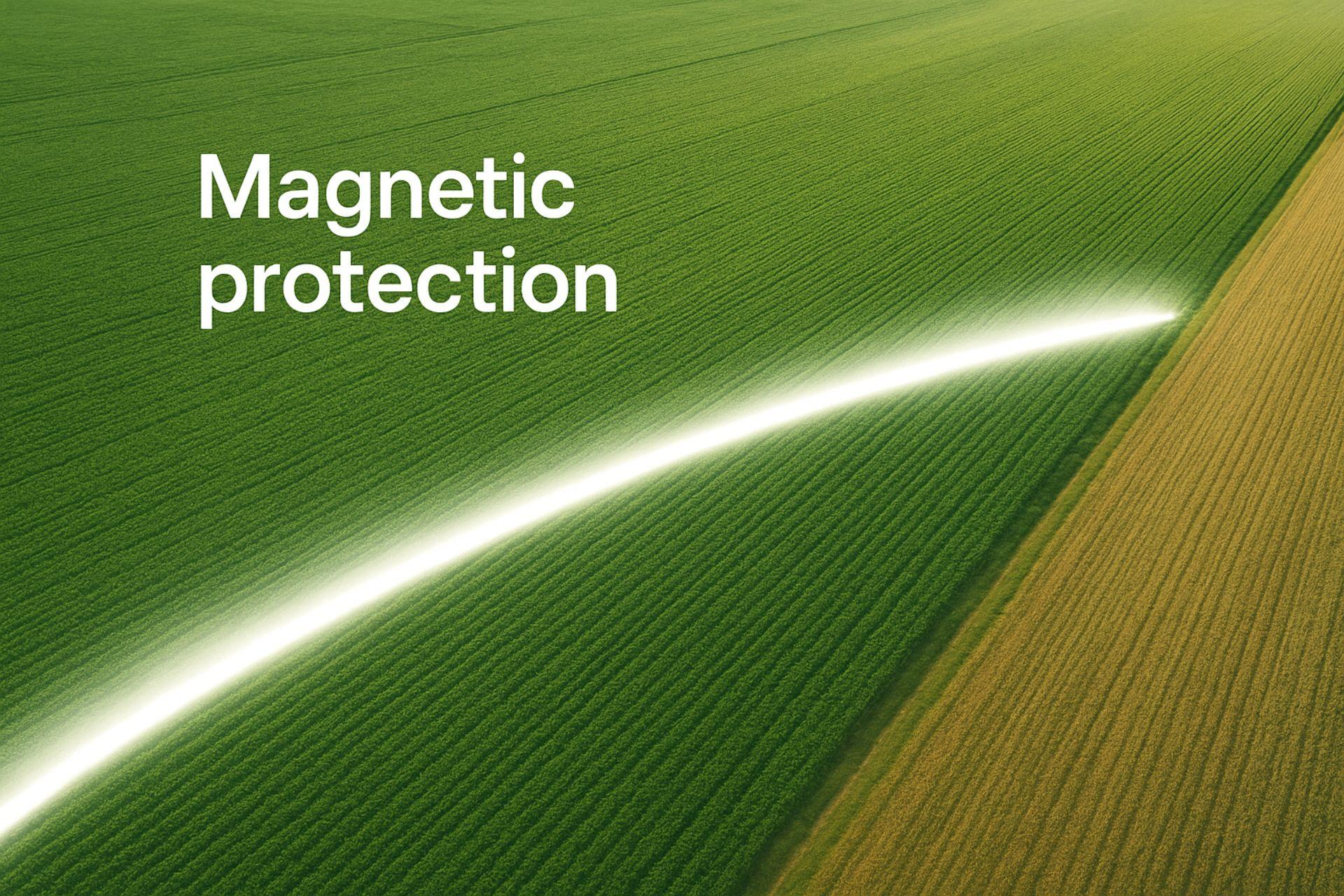
How hail alters the microclimate of crops
In recent years, extreme weather events, including hailstorms, have become increasingly frequent and intense due to climate change. For agriculture, and in particular for highly specialised sectors such as viticulture and fruit growing, hail is one of the most feared adversities: in just a few minutes, it can compromise entire crops.
Traditionally, damage is interpreted in terms of physical loss: torn bunches, broken leaves, bruised fruit. However, hail does not only cause mechanical damage. In fact, each event changes the microclimate of the plant:
- altering fundamental parameters such as light radiation, relative humidity, temperature and air circulation
- weakening the plant's magnetic halo structure, making it vulnerable.
These microclimatic alterations have direct consequences on plant physiology and on the final quality of agricultural production. For this reason, hail risk management cannot be limited to physical protection alone but must also consider the agronomic effects induced by an altered microclimate.
What do we mean by agricultural microclimate?
The term agricultural microclimate refers to the set of environmental conditions that develop in the space immediately surrounding the plant, i.e. inside and around the canopy. Unlike the general climate of a region, the microclimate of the plant is determined by the interaction between atmospheric factors and specific characteristics of the plant (planting density, training system, coverings, presence of nets or greenhouses).
Main components of the microclimate
- Solar radiation: the quantity and quality of light reaching the leaves and fruits, essential for photosynthesis and the synthesis of secondary metabolites (pigments, polyphenols, aromas).
- Temperature: affects vegetative growth, respiration, ripening and sugar accumulation. Small variations in the microclimate can alter the phenology of crops.
- Relative humidity: affects evapotranspiration, the water status of the plant and the development of fungal pathogens such as botrytis and powdery mildew.
- Ventilation: regulates gas exchange, moisture dispersion and the reduction of conditions favourable to disease.
However, we must add that, in addition to what agronomic science tells us, the alteration of these components following a hailstorm not only weakens the plant's natural defences but is also influenced by the strength of the plant's halo magnetic field, i.e. its ability to cope with the event.
Although what we list in the following chapter (effects of hail on the microclimate of crops) is explained from a physical point of view, we would like to remind you once again that every physical phenomenon is determined on a magnetic level, i.e. by its energetic correspondence.

Effects of hail on the microclimate of crops
Below are the main microclimate changes observed after a hailstorm, with the most frequent agronomic repercussions:
Loss of foliage and greater exposure to solar radiation
The traumatic event of hail implies:
- increased direct solar radiation on the fruit, with the risk of sunburn;
- reduction in photosynthetic functions, as the useful leaf surface is drastically reduced;
- alterations in heat exchange, with more marked fluctuations between day and night.
Increased humidity and greater risk of plant diseases
Lesions caused by hail promote sap loss and evaporation. At the same time, plant debris on the ground and the accumulation of rainwater in the wounds generate:
- increased relative humidity in the area of the bunches or fruits;
- optimal conditions for the development of botrytis, powdery mildew and secondary rot;
- greater vulnerability to bacterial infections through damaged tissues.
Physiological stress and alterations in photosynthetic processes
The plant reacts to damage by activating defence mechanisms that involve:
- diverting energy resources from growth and maturation to tissue repair;
- reduction in photosynthetic efficiency due to a smaller active surface area and increased transpiration;
- potential delay in ripening and imbalances in the synthesis of sugars, acids and secondary metabolites (polyphenols, anthocyanins, aromas).
Vineyards, orchards and other protected crops compared
The effects of microclimatic changes caused by hail are not uniform: they vary depending on the crop, the phenological stage and the intended use of the product. Some examples illustrate how the same weather event can have very different consequences.
Grapes
In grapes, the loss of foliage and altered exposure of the bunches directly affect technological and phenolic ripening. The reduction in photosynthetic surface area slows down sugar accumulation (°Brix) and alters the sugar/acid ratio. At the same time, increased direct solar radiation on the bunches compromises the synthesis of anthocyanins and aromas, with the risk of organoleptic imbalances in the wine. Some studies have shown that, depending on the intensity of the hailstorm, the delay in ripening can vary from a few days to several weeks.
Apple trees and other fruit trees
In fruit trees, the main critical issue concerns the aesthetic and commercial quality of the fruit. Changes in the microclimate of the canopy and increased exposure to sunlight can result in fruit with less uniform colouring or sunburn. In addition, stagnant moisture between damaged leaf residues promotes the development of pathogens (scab, botrytis), reducing the shelf life and health of the crop.
Horticulture
In horticultural crops, which are more sensitive to microclimatic variations, hail can significantly compromise water and metabolic balance. Defoliation caused by hail accelerates dehydration and alters plant evapotranspiration. For species such as tomatoes, peppers, or courgettes, even a moderate event can result in loss of productivity with reduced commercial quality.
Cereals
In cereals, hail damage mainly affects the ears and grains, with direct consequences on production and repercussions on the supply chain, particularly on the feeding of meat and dairy animals. The microclimatic impact on the above-ground part of the plant is less significant, which is why these crops are not generally considered in this context.
Flower and ornamental crops
In flower and ornamental crops, which are particularly sensitive to the aesthetic and morphological quality of the final product, the effects of microclimatic alterations induced by hail are significant. In particular, colour alterations in leaves and flowers (imbalance in pigment synthesis) and damage to development (proportion between vegetative and floral parts).
Hail nets and microclimate modifications
Hail nets are the most common form of protection for vineyards and orchards, but they alter the physical and physiological parameters that affect the microclimate of the crop. If these effects are not carefully assessed, they can have significant agronomic consequences. Let's look at some examples.
Shading and reduction of PAR radiation
The interposition of the net reduces the amount of photosynthetically active radiation (PAR) reaching leaves and fruit. Depending on the colour, texture and density of the material, the reduction can vary from 7% to over 20%.
Thermal variations and energy balance of the canopy
Nets attenuate direct radiation, reducing daily temperature fluctuations and mitigating extreme temperatures. Some studies report average increases of +0.3 °C under black nets and reductions in soil evaporation of up to 15%.
The literature agrees on one point: the agronomic effects of nets are not uniform, but depend on variety, area, type of net and farm management. This makes it essential to assess each case individually, so that hail protection does not compromise the quality and profitability of production.
In light of these considerations, there is a clear need for hail protection solutions that ensure protection without altering the microclimatic balance of the crop. Let us now see how this objective has been translated into a concrete solution.

Hail protection solutions with no agronomic effects
Agronomic research has shown that hail nets can affect the microclimate of plants, introducing variables that must be carefully considered. AXS M31, continuing to invest in research and development, has designed and marketed a solution capable of ensuring maximum protection against hail without generating negative agronomic effects.
The result is AntGran®, the magnetic cover that goes beyond the limits of hail nets and introduces a new standard of protection. No more poles, plastic nets and various structures are needed: AntGran® generates a dimensional magnetic field at height, creating natural protection against hail. A unique technology on the market, combining ease of use, respect for the environment and human health, and total absence of interference with the microclimate of the crop.
AntGran® does not interfere negatively with the physiological processes of the plant. In practice, it allows yields and quality similar to those of an uncovered vineyard or orchard to be maintained, while offering reliable protection against hailstorms.
